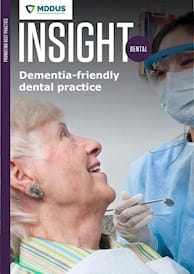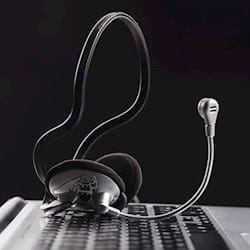These cases are based on actual calls made to MDDUS advisers and are published here to highlight common challenges within dental practice. Details have been changed to maintain confidentiality.
Flexible working request
Q. One of our receptionists has asked to reduce her days in the practice from five to three to allow her more time to care for her elderly mother. The partners thought that only employees with childcare issues were eligible to request a change of hours, but I don’t think this is the case. I have looked at the rota and we could manage if she changed to three days – but just not the specific days she is asking for.
Any employee – not just those with childcare issues – is entitled to make a flexible working request under the Employment Act 2003, provided they have been employed for more than 26 weeks and have not made a previous application in the last 12 months. A flexible working request can consist of a reduction in hours, a change of days, compressed hours, working from home, and job sharing.
A request for flexible working with all the particulars must be submitted in writing, advising that the request is being made under a statutory right. You should then arrange a meeting with your receptionist to discuss the matter further if the practice feels it cannot be accommodated or alternatives need to be offered. The employee has the right to be accompanied at this meeting.
Any request needs to be given serious consideration, taking into account such aspects as the benefits to the employee and the practice and weighing these against any possible adverse impact of implementing the changes. You should also ensure that you do not discriminate unlawfully against the employee. Your decision should be advised in writing to the employee. The practice can choose to either accept the request and set a start date (confirming any compromise or alternatives offered), or reject the request and explain the reasons for this. The eight reasons that a request can be rejected are:
- burden of additional costs
- detrimental effect on ability to meet customer demands
- inability to reorganise work amongst staff
- inability to recruit additional staff
- detrimental impact on quality
- detrimental impact on performance
- insufficient work during periods proposed to work
- planned structural changes.
All requests, including any appeals, must be considered and decided on within a period of three months from first receipt of the request, but this period can be extended through agreement with the employee. Ensure that all requests for flexible working are dealt with fairly and consistently.
GDPR for dentists
Q. I’m reviewing the practice’s documentation to make sure it complies with GDPR. Does MDDUS have any templates or other guidance for things like privacy notices that I could access to make sure I get it right?
Members can access a variety of useful resources within the Training & CPD section of the MDDUS website, including the Dental risk toolbox. You will see there is a specific section within the toolbox on GDPR (member login required), which includes a downloadable guidance sheet on privacy notices - what they are for and how they should be composed. There is also information on other aspects of GDPR for dentists, including data protection impact assessments, dealing with subject access requests and much more.
Obese patient
Q. One of our patients has grown very obese in recent years. He recently attended the practice for treatment and one of the dental chairs ceased working. We had to call out a technician and the chair was out of commission for the rest of the day. The maximum weight for our chairs is 128kg and I am certain the patient exceeds this limit. How do we deal with this in future? Can we refer him to a centre that treats larger patients?
MDDUS has had similar calls from members where the weight of a patient exceeds the safe operating limits of a dental chair as set out by the manufacturer. It is important to be aware that should an accident occur when treating a patient in such circumstances your public liability insurance practice may well not cover such an incident. You should consider contacting your public dental service and seek information regarding the availability of a bariatric chair with an operating weight limit in excess of what is routinely available in general dental practice. Alternatively, you could contact your local dental hospital in regard to referral to a service furnished with a bariatric chair.
How the situation is communicated to the patient can be challenging. Some patients may become extremely defensive and may accuse you of being discriminatory by not providing dental care at your own surgery. Take care in explaining that you are acting in the best interests of both the patient and your staff in preventing a potential accident.
Patient photo on social media
Q. I recently took a photograph of a patient before and after she had some cosmetic treatment carried out. She was happy for the photos to be taken at the time and for them to be added to her clinical record. I’m keen to also post the photos on the practice Facebook page to attract other patients – is this allowed if I don’t show her face?
Patients must be aware of how their personal information/images will be used and understand exactly what they are agreeing to. When deciding how to use a patient photo, remember that consent needs to be specific to each purpose. The patient must opt in for each usage. You say that she has agreed for the photos to be included in her clinical records – but if you want to do anything else with the images, you must seek her specific consent again and clearly note discussions in her record. This is the case even if you anonymise the photos. Find out more in our MDDUS advice article on dental clinical photography.
Shortened letters to referring GDPs
Q. Our dental outpatient department has been asked by the management team to consider reducing the length of letters sent back to referring dentists to cut the time/cost involved in typing and posting reports. Currently a full report will summarise the presenting complaint, medical history, examination, test results (positive and negative), discussion and treatment plan with consent. It is felt this could be reduced to a single line or two specifying only what further treatment is necessary. Would this be considered best practice?
MDDUS would have a number of concerns with regard to this suggestion. Many clinicians refer patients not simply for treatment but also for an opinion. The shortened version as described may not fulfil that need. A full report can aid the practitioner’s understanding and indeed form the basis for a detailed discussion with the patient in relation to what treatment is being suggested, including the risks and benefits and potential prognosis.
The General Dental Council's Standards for the dental team states: “You must always put your patients’ interests before any financial, personal or other gain”. Should you as a dental professional believe patients might be at risk it is your responsibility to take prompt and appropriate action to address that risk.
It is also important to consider that such letters are accessible to the patient and can form a key piece of evidence when claims are made. It is our view that management would be short sighted to force the change being suggested.
Disclosure to police
Q. I am a GDP and one of the practice patients vandalised my car. I didn’t see him do it, but he has admitted it to the practice manager. Can I give his name and address to police?
The General Dental Council has clear advice on this in its Standards guidance (principle 4.3). It states: “In exceptional circumstances, you may be justified in releasing confidential patient information without their consent if doing so is in the best interests of the public or the patient. This could happen if a patient puts their own safety or that of others at serious risk, or if information about a patient could be important in preventing or detecting a serious crime.” While this incident must be upsetting and may of course be reported to the police, unfortunately it is unlikely to meet the threshold for a “serious crime”, and so it would not on that basis be appropriate for you to provide confidential patient information. However, as the action occurred outside the practice and beyond the normal bounds of the dentist-patient relationship, it should be acceptable to disclose the patient’s name but not an address (the practice only has this information by virtue of him being a patient). If the police were to secure a court order requesting both name and address, then you would be allowed to disclose it.
It is worth noting that in these circumstances you would be entitled to consider whether the trust between you and the patient has broken down such that it is necessary to end the professional relationship (principle 1.7.8 of Standards – see article in this issue).
This page was correct at the time of publication. Any guidance is intended as general guidance for members only. If you are a member and need specific advice relating to your own circumstances, please contact one of our advisers.
Read more from this issue of Insight Dental

Save this article
Save this article to a list of favourite articles which members can access in their account.
Save to library


